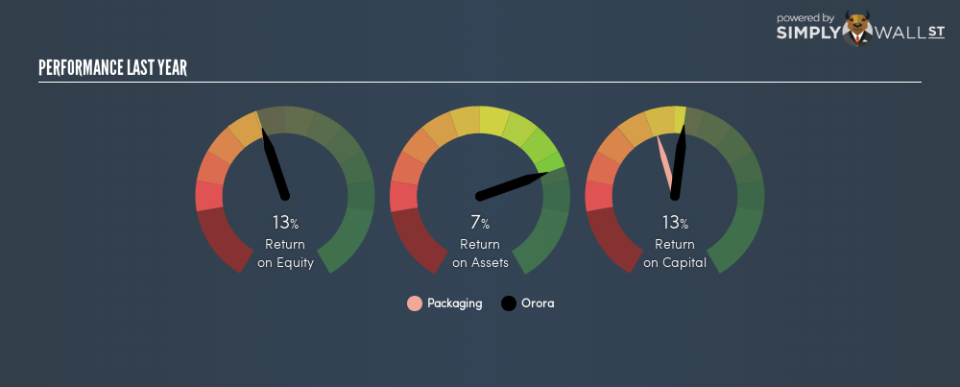Is Orora Limited (ASX:ORA) Investing Effectively In Its Business?

Want to participate in a short research study? Help shape the future of investing tools and you could win a $250 gift card!
Today we’ll evaluate Orora Limited (ASX:ORA) to determine whether it could have potential as an investment idea. In particular, we’ll consider its Return On Capital Employed (ROCE), as that can give us insight into how profitably the company is able to employ capital in its business.
First up, we’ll look at what ROCE is and how we calculate it. Then we’ll compare its ROCE to similar companies. Finally, we’ll look at how its current liabilities affect its ROCE.
What is Return On Capital Employed (ROCE)?
ROCE measures the amount of pre-tax profits a company can generate from the capital employed in its business. Generally speaking a higher ROCE is better. In brief, it is a useful tool, but it is not without drawbacks. Author Edwin Whiting says to be careful when comparing the ROCE of different businesses, since ‘No two businesses are exactly alike.’
How Do You Calculate Return On Capital Employed?
The formula for calculating the return on capital employed is:
Return on Capital Employed = Earnings Before Interest and Tax (EBIT) ÷ (Total Assets – Current Liabilities)
Or for Orora:
0.13 = AU$324m ÷ (AU$3.6b – AU$1.1b) (Based on the trailing twelve months to June 2018.)
So, Orora has an ROCE of 13%.
Check out our latest analysis for Orora
Is Orora’s ROCE Good?
One way to assess ROCE is to compare similar companies. We can see Orora’s ROCE is around the 13% average reported by the Packaging industry. Separate from Orora’s performance relative to its industry, its ROCE in absolute terms looks satisfactory, and it may be worth researching in more depth.
As we can see, Orora currently has an ROCE of 13% compared to its ROCE 3 years ago, which was 10%. This makes us think about whether the company has been reinvesting shrewdly.
When considering ROCE, bear in mind that it reflects the past and does not necessarily predict the future. ROCE can be misleading for companies in cyclical industries, with returns looking impressive during the boom times, but very weak during the busts. This is because ROCE only looks at one year, instead of considering returns across a whole cycle. Since the future is so important for investors, you should check out our free report on analyst forecasts for Orora.
Do Orora’s Current Liabilities Skew Its ROCE?
Short term (or current) liabilities, are things like supplier invoices, overdrafts, or tax bills that need to be paid within 12 months. Due to the way ROCE is calculated, a high level of current liabilities makes a company look as though it has less capital employed, and thus can (sometimes unfairly) boost the ROCE. To counteract this, we check if a company has high current liabilities, relative to its total assets.
Orora has total assets of AU$3.6b and current liabilities of AU$1.1b. Therefore its current liabilities are equivalent to approximately 30% of its total assets. Orora has a medium level of current liabilities, which would boost the ROCE.
Our Take On Orora’s ROCE
With a decent ROCE, the company could be interesting, but remember that the level of current liabilities make the ROCE look better. Of course you might be able to find a better stock than Orora. So you may wish to see this free collection of other companies that have grown earnings strongly.
For those who like to find winning investments this free list of growing companies with recent insider purchasing, could be just the ticket.
To help readers see past the short term volatility of the financial market, we aim to bring you a long-term focused research analysis purely driven by fundamental data. Note that our analysis does not factor in the latest price-sensitive company announcements.
The author is an independent contributor and at the time of publication had no position in the stocks mentioned. For errors that warrant correction please contact the editor at editorial-team@simplywallst.com.

 Yahoo Finance
Yahoo Finance 
